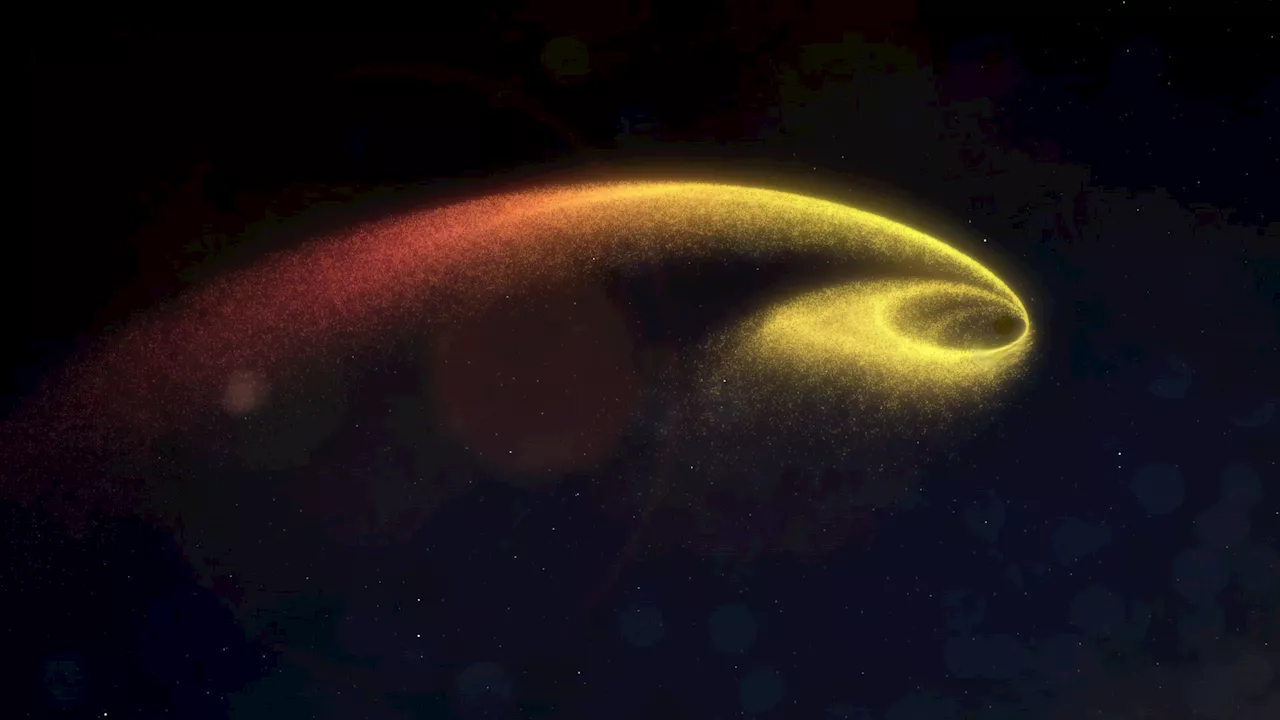Stars similar to the Sun produce a gigantic outburst of radiation on average about once every hundred years per star. Such superflares release more energy than a trillion hydrogen bombs and make all previously recorded solar flares pale in comparison. This estimate is based on an inventory of 56450 sun-like stars.
More often than previously thought, sun-like stars hurl huge amounts of radiation into space: The Sun, too, is capable of such outbursts It shows that previous studies have significantly underestimated the eruptive potential of these stars. In data from NASA's space telescope Kepler, superflaring, sun-like stars can be found ten to a hundred times more frequently than previously assumed. The Sun, too, is likely capable of similarly violent eruptions.
Another way to learn about our Sun's long-term behavior is to turn to the stars, as is the approach of the new study. Modern space telescopes observe thousands and thousands of stars and record their brightness fluctuations in visible light. Superflares, which release amounts of energy of more than one octillion joules within a short period of time, show themselves in the observational data as short, pronounced peaks in brightness.
"High performance dynamo computations of these solar-type stars easily explain the magnetic origins of the intense release of energy during such superflares," said coauthor Dr. Allan Sacha Brun of the Commissariat of Atomic and Alternative Energies of Paris-Saclay and the University of Paris-Cité."We were very surprised that sun-like stars are prone to such frequent superflares," said first author Dr. Valeriy Vasilyev from the MPS.
The most important preparation for strong solar storms is therefore reliable and timely forecasting. As a precaution, satellites, for example, could be switched off. From 2031, ESA's space probe Vigil will help in the endeavor of forecasting. From its observation position in space, it will look at the Sun from the side and notice sooner than Earth-bound probes when processes that might drive dangerous space weather are brewing up on our star.
Solar Flare Stars Astronomy Geomagnetic Storms Energy And The Environment Renewable Energy Atmosphere
United States Latest News, United States Headlines
Similar News:You can also read news stories similar to this one that we have collected from other news sources.
 Stars Like Our Sun Explode With ‘Superflares’ Every 100 Years, Study SuggestsA survey of Sun-like stars found that they produce a superflare roughly once per century.
Stars Like Our Sun Explode With ‘Superflares’ Every 100 Years, Study SuggestsA survey of Sun-like stars found that they produce a superflare roughly once per century.
Read more »
 A Once-A-Century ‘Superflare’ From The Sun Is Long Overdue, Scientists SayA study of 56,000 Sun-like stars has revealed that stars like ours may experience powerful 'superflares' about once per century.
A Once-A-Century ‘Superflare’ From The Sun Is Long Overdue, Scientists SayA study of 56,000 Sun-like stars has revealed that stars like ours may experience powerful 'superflares' about once per century.
Read more »
 Sun-Like Stars Around Black Holes: What Gives?Buried in the treasure trove of the Gaia catalog were two strange black hole systems containing black holes orbiting sun-like stars.
Sun-Like Stars Around Black Holes: What Gives?Buried in the treasure trove of the Gaia catalog were two strange black hole systems containing black holes orbiting sun-like stars.
Read more »
 Two signs that ski season is fully underway: Vail’s Back Bowls and A-Basin’s Pallavicini are openThe opening of the Back Bowls — Sun Up and Sun Down — is the earliest since 2018.
Two signs that ski season is fully underway: Vail’s Back Bowls and A-Basin’s Pallavicini are openThe opening of the Back Bowls — Sun Up and Sun Down — is the earliest since 2018.
Read more »
 All I Want for Christmas Is for Joey To Win 'Dancing With the Stars'“Dancing with the Stars” stars Joey Graziadei. br /
All I Want for Christmas Is for Joey To Win 'Dancing With the Stars'“Dancing with the Stars” stars Joey Graziadei. br /
Read more »
 How cells habituate | ScienceDailyUp until recently, habituation -- a simple form of learning -- was deemed the exclusive domain of complex organisms with brains and nervous systems, such as worms, insects, birds, and mammals.
How cells habituate | ScienceDailyUp until recently, habituation -- a simple form of learning -- was deemed the exclusive domain of complex organisms with brains and nervous systems, such as worms, insects, birds, and mammals.
Read more »
